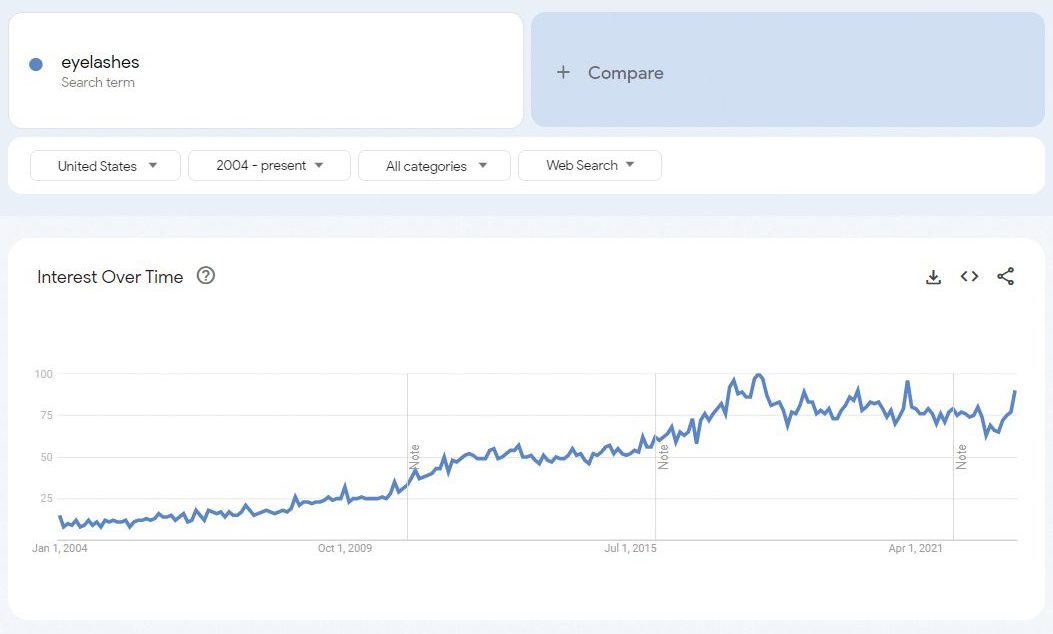Google it.
That may make a lot of sense for most questions.
Google Trends, perhaps the most overlooked SEO/content marketing/market research/competitive analysis/PR targeting tool, is one resource to help build an effective digital marketing plan. When it comes to marketing, never try to do it by yourself. You will need partners, team members and tools, which will help you glean insight from your competitors in the marketplace.
Online tools, such as Google Trends, can help you uncover interesting statistics or search trends your target audience may be looking at to help further craft your digital marketing campaign.
Here are six ways you can use Google Trends to develop a better marketing program for your organization:
Market Research
You need to know where your customers are searching, what they’re searching and how they are searching. The research is a key step, and one of the first steps you should take into consideration, when building a marketing plan.
In addition, you should not launch any marketing campaign without strategy, which will include some level of market research. Free online tools like Google Trends can help you get to market faster.
Let’s say you are in the business of selling eyelash services. First, go to Google Trends and change the review period from “Past 12 Months” to “2004-Present,” which will allow you to see long-term trends.
It appears the search term “eyelashes” took off in popularity in 2008 and peaked in 2018. However, it has maintained a large amount of popularity, forming a stable plateau. If you dig a little deeper, you will learn that February is one of the months when demand for eyelashes is the highest. So, if you are selling eyelash services, make sure you start promoting Valentine’s Day early.
In any case, eyelashes look like an area to target. But that’s not it. Scroll down to “Related Topics” and “Related Queries” to learn about additional services and products you could sell. Artificial hair integrations, eyelash extensions and magnetic eyelashes appear to be service areas with demand. Regarding product line extensions, search term interest in castor oil, adhesives and Vaseline provides you with some more complementary areas to explore from an operations perspective.
The 10-week PPC campaign generated 224,516 impressions and 1,619 marketing leads.
Newsjacking
Newsjacking is a technique that leverages the popularity and demand of another topic to promote your own brand.
For example, when the pandemic hit in 2020, it became difficult to get into third-party news sites unless you wanted to talk about COVID-19. For one of our clients, First Bank headquartered in Hamilton, New Jersey, we created a newsjacking opportunity when we linked the community bank with the newly released Paycheck Protection Program from the federal government. The program’s objective was
intended to save small businesses by providing capital through loans. Providing capital to small businesses happens to be a large part of First Bank’s business. So, we made the case to large media outlets—like the New York Times, Wall Street Journal, Associated Press and CBS News—that they couldn’t tell the story accurately without including a financial institution, such as First Bank.
As a result, we became First Bank’s virtual news service, securing the bank a series of interviews in under two weeks that led to more than 35 media placements, which garnered more than half a billion impressions—520.5 million to be exact.
Here is how you can quickly assess what is trending on Google Trends so your organization can create an opportunity with trending search terms and topics:
Go to Google Trends and click on the icon in the upper lefthand corner of the homepage. Click on “Trending Searches” and review “Daily Trending Searches.” If you are looking for more recent opportunities, click on “Realtime Search Trends” for hourly possibilities.
Look for trending topics that you can connect your brand, so your owned-media traffic and PR efforts will improve.
In addition, go back to the icon in the upper lefthand corner of the homepage and click on subscriptions. Create subscriptions based on keywords and region so you will receive the latest trending data from Google Trends in your inbox.
Keyword Research (Short-Term Trends for SERPs)

Knowing the keywords that you want to be found for, as well as what your audience is searching for is what will ultimately bring you the right leads to help your business/organization grow.

Start by focusing on search engine results pages (SERPs), which are the pages that pop up on the screen after you type your problem into a search box. In the world of digital marketing, SERPs are vital. You want your brand to consistently show up on Page One every time. To achieve that feat in a field of highly competitive keywords, you must conduct keyword research throughout the course of the campaign. A digital marketing plan that includes more social media, more internal and external links, better images and better content that speaks directly to your audience will improve your brand’s position on SERPs.
Short-term trends are another part of keyword research for SERPs that is often overlooked.
When you go to Google Trends, you will see the top bar with several drop-down boxes. Click on the second down arrow from the left and select “Past 90 Days” and then try “Past 30 Days” so you can see if there are fleeting opportunities for your brand. If you search for SERPs in the last 90 days, you will see that it popped on July 23. With a little bit of research, you can find what factors made the search term increase so much above its baseline. This insight will position you to take advantage of the next opportunity so you can improve position on SERPs.
Search Intent
You’re getting ahead of them in a sense—that’s the value of learning about search intent for your target audiences. If you know what your target audience is searching for, that will help you craft messaging, it will help you learn about the specific spaces to market in as well as choosing the right keywords and key phrases in your digital advertising campaigns.
For example, we are all in sales. Directly or indirectly, you are in sales. When it comes to sales support, it’s important to craft all forms of digital marketing around the first two questions that prospects ask: 1) Have you ever worked with a company like mine? And 2) What makes you special?/Why should I hire you?
Those two questions lead to the third and final question: How much? But let your sales team manage that one.
From a marketing perspective, the top 90% of the sales funnel is your responsibility.
Even though it sounds daunting, you can dramatically improve your chances of success by learning about the intent of your customers and prospects. Once you know someone’s intent, you will know how to say your response and how to position your brand.
You can use Google Trends to gain valuable insight into intent by using one simple hack. Using the earlier example of “digital marketing,” add a word in front of the search term that implies a question. In other words, instead of typing digital marketing in the search box, type “how digital marketing,” then type “why digital marketing.”
When we type “how digital marketing,” we see opportunities regarding search intent. The marketplace is interested in learning about affiliate marketing, SEO and how to create a digital marketing strategy. This is enough data to start drafting your blog lineup. You can even drill down by clicking on an item in “Related Queries” and find more content opportunities to bring prospects closer to our brand.
Long-Tail Phrases
Long-tail phrases are longer, more specific keywords than general keywords. In fact, they may be five words or more. While the search volume tends to be much lower for long-tail keywords, they have value in finding people who are in the lower part of the sales funnel and ready to purchase.

One way to harvest long-tail keywords on Google Trends is to combine several general keywords associated with your brand. For example, if your organization sells websites and you target small businesses, you could type “small business web design” into the box. Then, scroll down and review “Related Queries” to harvest new long-tail keywords, such as “affordable web design for small business,” “web design services for small business” and “web design for small business.”
Blog Topics
Blogs are like fuel for your website. They also serve as a platform for search engine optimization (SEO) and content marketing, as well as a catalyst for social media and PR.
You should constantly be adding fresh content to your website to continue to get found and be favorable in Google’s eyes, and blogs are a great way to do that. They also allow you to continuously weave in keywords/key phrases that you want to be found for in an organic way in search results.
Google Trends can help you ramp up results for blog content.
That’s good news because content marketing costs about 62% less than traditional marketing tactics and generates about three times as many leads, according to DemandMetric. Overall, 70% of internet users would prefer to learn about a product through content vs. traditional advertisements.
Do you know why?
Because storytelling helps us make sense of the world by communicating our values and, ultimately, connecting us. A story speaks directly to us in a way data and slides can’t compare.
A brand story, for example, simplifies complex topics and conveys an organization’s purpose. In fact, companies that convey purpose and value can outperform their counterparts in stock price by a factor of 12 and have a profit performance ratio 750x higher than companies without shared values, according to the Corporate Culture & Performance study conducted by John Kotter and James Heskett.
A series of blogs also helps your brand standout in the marketplace. Whether you are selling a product or service, there tends to be a fundamental marketing challenge because everything is flat. For example, you sell LED lighting fixtures. So what? So does everybody else? Now what? How do your prospects make up their minds before they purchase your fixtures?
That’s why you should wrap your product or service in a “story,” which adds layers of interest. As opposed to selling your products’ features, write blogs that tell the story through the founder of the company. Craft your blogs to tell the story through the customers who benefit and appreciate the product.
Adding value to your target audiences is the best way to separate your brand from the rest. And that difference is an easy way to increase margins.

So how can I use Google Trends to maximize my blogs? Go to the homepage and type in your first keyword. Let’s use “digital marketing” for this example.
After you get the results, scroll down and review the “Related Topics” and “Related Queries” sections. This part of the page will tell you what is trending. Look for the keywords that play well with your brand, while taking into account each search terms’ popularity. On Google Trends, a “breakout” search term means it has increased by more than 5,000%. So, let’s click on “digital marketing trends in 2023” for starters.
Now, you will see current marketplace data that can be turned into better blogs, which drive more traffic to your website. Keywords such as marketing, digital marketing, digital media and social media are experiencing spikes in popularity at the time of this post.
What blog angles can you craft around social media and digital media? How about create a step-by-step plan for digital marketing? People are searching for it.
Online tools, such as Google Trends, can save time by getting answers faster to help steer you in the right direction—but working with a marketing agency that provides digital marketing solutions and experts can ultimately be the key differentiator to providing the best results online.
Kelsey Tweedly
Kelsey Tweedly is the director of business integration at CMA. She ensures our clients and employees transition into CMA seamlessly and are set up for ongoing success. She also heads up the brand of the company and makes sure it is practiced and preached both internally with our crew members, and external throughout all initiatives. She manages our company’s strategy and works closely with the leadership team to promote CMA through social media, digital and web campaigns, videos, content, new business opportunities, networking, community partnerships and more. Internally, Kelsey is the champion for our crew and leads all initiatives that align with the CMA culture.